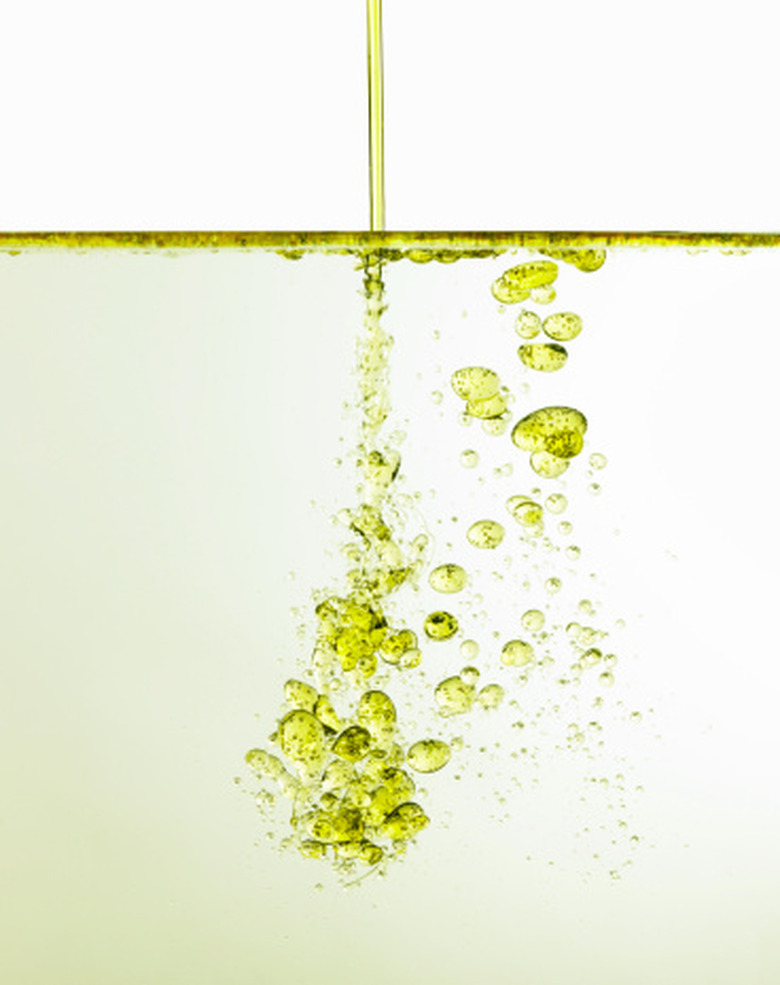What Happens To Nonpolar Molecules In Water?
Nonpolar molecules do not dissolve easily in water. They are described as hydrophobic, or water fearing. When put into polar environments, such as water, nonpolar molecules stick together and form a tight membrane, preventing water from surrounding the molecule. Water's hydrogen bonds create an environment that is favorable for polar molecules and insoluble for nonpolar molecules.
Properties of Water
Properties of Water
A water molecule is composed of two elements: one oxygen atom and two hydrogen atoms. Water is a polar molecule, meaning the electrons are not shared equally between the three atoms. Oxygen has a high electronegativity, or electron-loving, making the oxygen end of a water molecule slightly negative and the hyrogen end slightly positive. For example, ions, such as table salt (NaCl), dissolve easily in water because the positive ions are drawn to the negative oxygen and negative ions to positve hydrogens. Water is a polar molecule, thus a polar solvent.
Nonpolar Molecules
Nonpolar Molecules
Nonpolar molecules are hydrophobic; "hydro-" means water and "-phobic" means fear. Nonpolar molecule are water fearing and do not easily dissolve in water. These molecules have nonpolar covalent bonds or polar covalent bonds, both of which share their electrons equally between the bonded elements. The shared electrons make it difficult for the electrons to be drawn away by oxygen's electron-loving properties. Thus the molecules are strong and stable and do not break apart easily.
Effects of Hydrogen Bonds
Effects of Hydrogen Bonds
Water's hydrogen bonds affect the properties of nonpolar molecules, those with carbon and hydrogen, in water. Because nonpolar molecules do not easily dissolve in water and are hydrophobic, they become squeezed together. This is how cell membranes are formed — the water-fearing parts of the molecules all face the same direction and squeeze together to prevent water from touching them. The water cannot get through the membrane.
Example
Example
Examples of nonpolar molecules being put in water are easily found, especially in the kitchen. Mix vegetable oil with food coloring and pour it on top of water in a clear cup. The oil and water do not mix because water is polar and oil is nonpolar. The nonpolar molecules form a membrane between the water and oil. Notice how oil drops in the water half form drops, blocking their insides from the water. However, the food coloring slowly makes its way out of the oil into the water, demonstrating the fluidity in the membrane if the molecules are polar, like food coloring.
Cite This Article
MLA
Horky, Allison. "What Happens To Nonpolar Molecules In Water?" sciencing.com, https://www.sciencing.com/happens-nonpolar-molecules-water-8633386/. 13 March 2018.
APA
Horky, Allison. (2018, March 13). What Happens To Nonpolar Molecules In Water?. sciencing.com. Retrieved from https://www.sciencing.com/happens-nonpolar-molecules-water-8633386/
Chicago
Horky, Allison. What Happens To Nonpolar Molecules In Water? last modified March 24, 2022. https://www.sciencing.com/happens-nonpolar-molecules-water-8633386/
